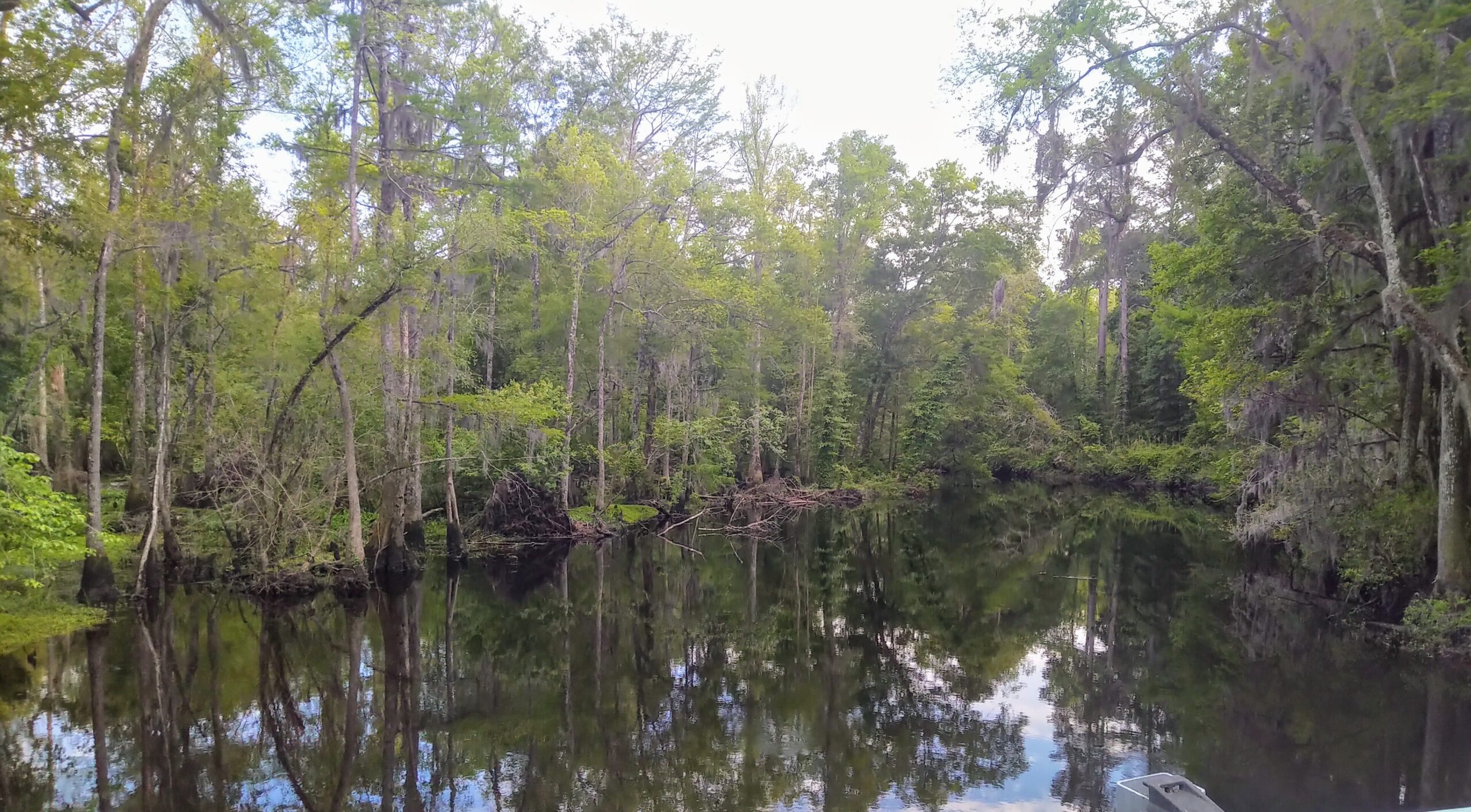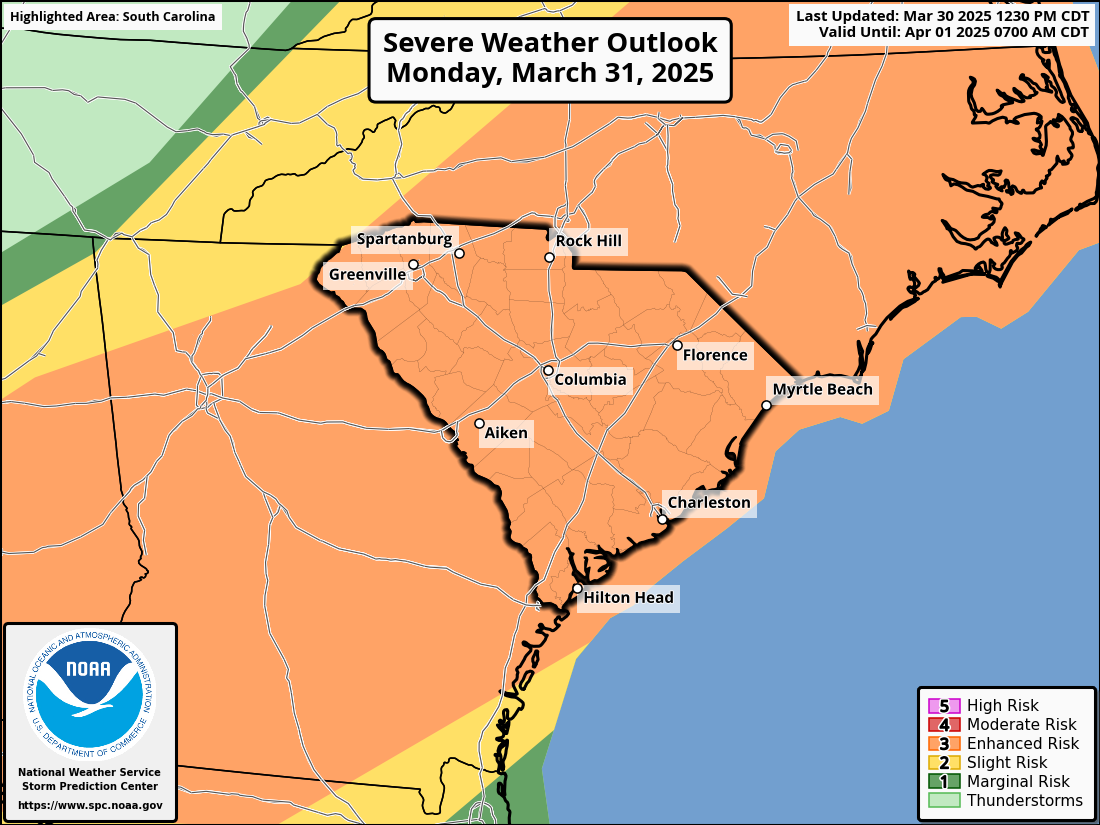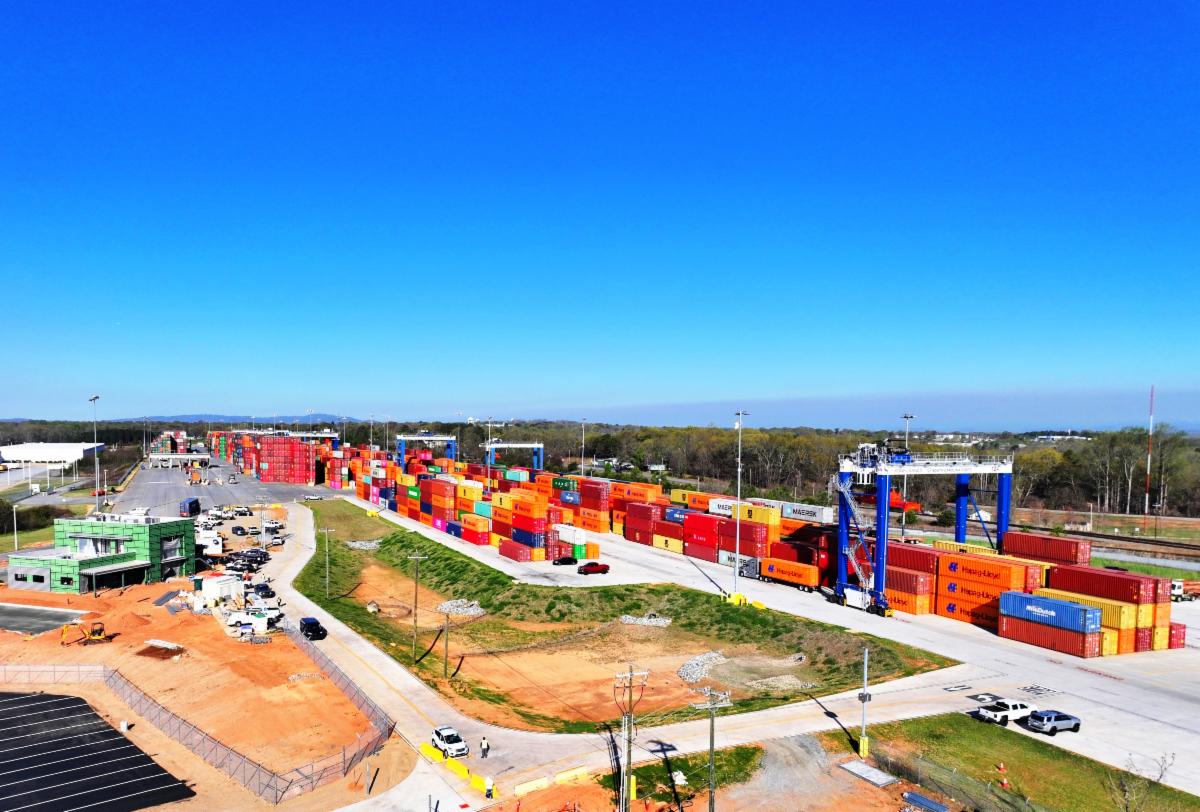MYRTLE BEACH— The Little Pee Dee River in North and South Carolina has been named one of America’s Most Endangered Rivers® for 2024, a list of rivers at a crossroads, where key decisions in the coming months will determine the rivers’ fates. Looming highway development and poor resource management has put this river at risk, threatening critical habitat for endangered fish and wildlife, as well as impacting public safety for adjacent communities.
“The designation of the Little Pee Dee River as one of America’s Most Endangered Rivers® couldn’t have occurred at a more critical time. With Horry County’s rapid growth, development is poised to move westward towards this pristine river. However, this designation offers the public a vital window of opportunity. It provides time to understand the nature of this river, appreciate its pristine beauty, and consider steps to mitigate any negative impacts, such as increased flooding due to the destruction of surrounding wetlands, before development begins to affect the Little Pee Dee in the years to come,” said Dylan Coleman, Pee Dee Rivers/Lynches River Project Coordinator.
“The Little Pee Dee River is home. I have deep roots intertwined with the currents of the Little Pee Dee, having spent my childhood and most of my adulthood along its banks. It has shaped my memories and instilled in me a profound connection to its beauty and importance. The Little Pee Dee River is more than just water; it holds the lifeblood of our local communities, ecosystems, and our shared future. Protecting the Little Pee Dee isn’t just about safeguarding a river; it’s about preserving a vital artery of biodiversity, recreation, and sustenance. It’s about protecting this natural resource for the plants, wildlife, and communities that depend on it. As stewards of our environment, we recognize the imperative to cherish and defend this precious resource, ensuring its vitality for generations to come,” said Debra Buffkin, Executive Director, Winyah Rivers Alliance.
“The cultural and family heritage of today’s Waccamaw and Pee Dee tribes are significantly connected to the Little Pee Dee River,” said Cheryl Cail, Acting Chief of the Waccamaw Indian People. “The numerous wetlands were a safe haven for indigenous people during the time of settlement expansion. The Little Pee Dee River provided safe passage and unencumbered access to fishing, hunting, foraging and trade between the tribes.”
The Little Pee Dee River, situated primarily in the upper coastal plain of South Carolina, is recognized as one of the Southeast’s most unique blackwater rivers, holding remarkable value for people and wildlife. Along its 118-mile course are miles of forested wetlands, which provide a critical habitat for endangered species of fish and wildlife. The river has remained mostly untouched by development, but the looming threat of highway development and poor resource management puts this river, and the communities that depend on it, at risk.
The construction of Interstate 73 would cross the Little Pee Dee River and run through the Little Pee Dee Heritage Preserve. This highway construction would destroy wetlands and critical wildlife habitat, impact the health of the river, and exacerbate flooding for disadvantaged communities already challenged with property damage and displacement.
“There is no need for a new interstate,” said Becky Ryon, the North Coast Office Director for the Coastal Conservation League. “Improving existing roads would deliver similar economic and transportation benefits at a fraction of the cost of building I-73, without devastating our environment and communities. The Little Pee Dee River is a great example of our valuable resources that would be threatened by unnecessary road projects.”
I-73 would impact hundreds of acres of pristine wetlands in the watershed. Based on the submitted permit application to the U.S. Army Corps of Engineers, 313 acres of wetlands would be impacted by just a segment of the proposed I-73. In addition, 13 perennial streams would be disturbed between the existing I-95 and South Carolina Highway 22. Numerous marginalized communities will be displaced and at risk from the threats of exacerbated flooding. New highway infrastructure will hinder wildlife reproduction, leading to a decline in the population of land and aquatic species.
Although I-73 is permitted and shovel-ready, the state has not yet identified the $2 billion in funding needed for construction. This November, Horry County residents will vote on a transportation sales tax which could include $450 million for a portion of the interstate. Horry County voters must remain vocal in opposing funding this unnecessary interstate. Voting to oppose the sales tax would send a clear message that Horry County understands the impact this interstate would have on communities and wetlands.
With historical land use practices already causing wetland degradation, the ruling in Sackett v. EPA has significant implications for freshwater wetlands in the Little Pee Dee River watershed, including impacts on flooding, water quality, and wildlife habitats. Despite rollbacks at the federal level, South Carolina can enact state-level legislation to establish new wetland protections.
From its headwaters at Gum Swamp and Shoeheel Creek in North Carolina, the Little Pee Dee River flows into South Carolina at Marlboro County and continues southeast until it converges with the Great Pee Dee River at the tri-county connection with Georgetown County. The numerous floodplains within the watershed encompass large acreages of wild and undeveloped forestland, while wetlands connect to an abundance of creeks and streams. These waters provide sanctuary to breeding and migratory waterfowl, in addition to resources for inland fisheries.
“The Little Pee Dee River is not just a body of water; it’s a vital lifeline to our ecosystem, our heritage, and our future,” said Debra Buffkin, Executive Director of Winyah Rivers Alliance. “As stewards of this precious resource, we must take a stand to ensure its preservation. Development, particularly the proposed construction of I-73, threatens the integrity of this river and the delicate balance of its ecosystem.
“We must enact stringent protections to safeguard the Little Pee Dee River from the encroachment of development. Its waters should remain unspoiled, its banks untouched by concrete, and its surrounding habitats preserved for generations to come. Let us not sacrifice the natural beauty of this river for short-term gains but instead commit to its conservation and sustainability.
“The Little Pee Dee River is a testament to the resilience of nature and a source of inspiration for all who cherish its beauty. Let us unite in our efforts to defend it against the pressures of development, ensuring that it continues to flow freely, providing solace and sustenance to both wildlife and humanity alike.”
Over the years, the America’s Most Endangered Rivers report has helped spur many successes, including the removal of outdated dams, the protection of rivers with Wild and Scenic designations, and the prevention of harmful development and pollution.
Other rivers in the region listed as endangered in recent years include South Carolina’s Edisto River (2015), and South Fork Edisto River (2014). The issues have ranged from wastewater discharges and coal ash pollution to excessive water withdrawals.
American Rivers reviews nominations for America’s Most Endangered Rivers® from local groups and individuals across the country, and selects rivers based on three criteria:
1) The river’s significance to people and wildlife
2) The magnitude of the threat to the river and communities, especially in light of climate change and environmental injustice
3) A decision in the next 12 months that the public can influence
America’s Most Endangered Rivers® of 2024
#1: Rivers of New Mexico
Threat: Loss of federal clean water protections
#2: Big Sunflower and Yazoo Rivers (MS)
Threat: Yazoo Pumps project threatens wetlands
#3: Duck River (TN)
Threat: Excessive water use
#4: Santa Cruz River (AZ)
Threat: Water scarcity, climate change
#5 Little Pee Dee River (NC, SC)
Threat: Harmful development, highway construction
#6 Farmington River (CT, MA)
Threat: Hydro dam
#7: Trinity River (CA)
Threat: Outdated water management
#8: Kobuk River (AK)
Threat: Road construction, mining
#9 Tijuana River (CA, Mexico)
Threat: Pollution
#10: Blackwater River (WV)
Threat: Highway development
About American Rivers
American Rivers is championing a national effort to protect and restore all rivers, from remote mountain streams to urban waterways. Healthy rivers provide people and nature with clean, abundant water and natural habitat. For 50 years, American Rivers staff, supporters, and partners have shared a common belief: Life Depends on Rivers. For more information, please visit AmericanRivers.org
About the Coastal Conservation League
Since 1989, the Coastal Conservation League has worked to protect the health of the natural resources of the South Carolina coastal plain and ensure a high quality of life for all of the people who live in and love this special place. The Coastal Conservation League is a 501(c)3 charitable organization. Learn more and get involved at www.coastalconservationleague.org.
About Winyah Rivers Alliance
Winyah Rivers Alliance) is an Alliance of Riverkeepers protecting our rivers for fishing, swimming and drinking. We conserve our land and water for the benefit of our families and our future. Incorporated as a 501(c)(3) nonprofit in 2001, we began as a grassroots organization of people from North and South Carolina to watch over the watersheds of the Lower Pee Dee Basin.







